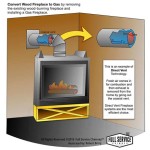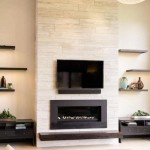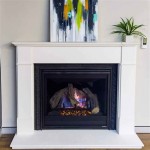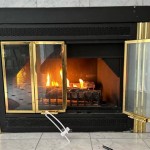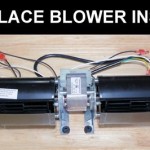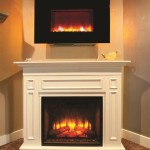Fireplace Screen Door Inserts: Safety, Style, and Functionality
Fireplace screen door inserts are essential components for any wood-burning or gas fireplace. They serve multiple crucial functions, ranging from enhancing safety to adding a layer of aesthetic appeal. These inserts provide a barrier against sparks and embers, prevent drafts when the fireplace is not in use, and can significantly contribute to the overall design and style of a living space. The selection and installation of a fireplace screen door insert requires careful consideration of various factors, including the type of fireplace, the dimensions of the opening, the material of the insert, and the desired style.
The primary purpose of a fireplace screen door insert is safety. Open fireplaces pose a significant risk of sparks and embers escaping the firebox and igniting nearby flammable materials, such as carpets, furniture, or drapes. Children and pets are particularly vulnerable to burns if they get too close to an open flame. A properly installed screen door insert acts as a physical barrier, containing these hazards and minimizing the risk of accidental fires or injuries. This safety aspect is paramount for any household with a functioning fireplace, making a screen door insert a non-negotiable investment.
Beyond safety, fireplace screen door inserts contribute to the energy efficiency of a home. When a fireplace is not in use, the chimney can act as a conduit for drafts, allowing cold air to enter the house during winter and warm air to escape during summer. A well-fitted screen door insert, especially one with tight sealing features, can significantly reduce these drafts, preventing heat loss and lowering energy bills. This benefit is particularly noticeable in older homes with less efficient insulation. The insert essentially seals off the fireplace opening, preventing unwanted air exchange between the inside and outside of the house.
Furthermore, fireplace screen door inserts offer an aesthetic upgrade to the fireplace itself. They are available in a wide variety of styles, finishes, and designs, allowing homeowners to customize the look of their fireplace to match their existing décor. From traditional wrought iron designs to sleek, modern stainless steel options, there is a screen door insert to complement virtually any interior style. The insert can transform a plain or outdated fireplace into a focal point of the room, adding visual interest and enhancing the overall ambiance.
Choosing the Right Type of Fireplace Screen Door Insert
The selection of a fireplace screen door insert involves careful consideration of several factors, beginning with the type of fireplace itself. There are generally two main types of fireplaces: masonry fireplaces and prefabricated (zero-clearance) fireplaces. Masonry fireplaces are built on-site using bricks or stones and are typically larger and more traditional in design. Fabricated fireplaces, on the other hand, are manufactured in a factory and are designed to be installed within a combustible wall. The type of fireplace dictates the type of screen door insert that can be used.
For masonry fireplaces, custom-made screen door inserts are often the best option. These inserts are specifically designed to fit the unique dimensions and shape of the fireplace opening. This ensures a snug fit, maximizing safety and minimizing drafts. Custom inserts also allow for greater design flexibility, allowing homeowners to choose the materials, finish, and style that best suits their preferences. While custom inserts are generally more expensive than prefabricated options, they offer superior quality and a more tailored aesthetic.
Prefabricated fireplaces typically require screen door inserts that are specifically designed and approved for use with that particular model. Using an incompatible insert can be dangerous and may void the fireplace's warranty. These inserts are usually available from the fireplace manufacturer or from authorized retailers. They are designed to fit the specific dimensions of the fireplace opening and to meet the safety standards required for prefabricated fireplaces. It is crucial to consult the fireplace's owner's manual to determine the correct type of screen door insert to use.
Additionally, the type of fuel used in the fireplace – wood or gas – can also influence the choice of screen door insert. Wood-burning fireplaces tend to produce more sparks and embers than gas fireplaces, so a screen door insert with finer mesh may be necessary to provide adequate protection. Gas fireplaces, on the other hand, may require inserts with specific ventilation features to ensure proper combustion and prevent the buildup of carbon monoxide. The specific requirements and recommendations should always be consulted before making a decision.
Materials and Construction of Fireplace Screen Door Inserts
The materials used in the construction of fireplace screen door inserts significantly impact their durability, appearance, and price. Common materials include steel, wrought iron, stainless steel, and glass. Each material offers distinct advantages and disadvantages, and the best choice depends on the homeowner's individual needs and preferences.
Steel is a common and relatively affordable material for fireplace screen door inserts. It is strong and durable, providing good protection against sparks and embers. Steel inserts are typically coated with a powder finish to prevent rust and corrosion, but they may still require occasional maintenance to ensure longevity. Steel inserts are available in a wide range of styles and designs, making them a versatile option for many fireplaces.
Wrought iron is a more decorative and traditional material for fireplace screen door inserts. It is known for its intricate designs and handcrafted appearance. Wrought iron inserts are typically more expensive than steel inserts, but they offer a unique aesthetic appeal that can enhance the look of a fireplace. Wrought iron is also a durable material, but it is more susceptible to rust and corrosion than steel, so it requires regular maintenance and painting to keep it in good condition.
Stainless steel is a premium material for fireplace screen door inserts. It is exceptionally durable and resistant to rust and corrosion. Stainless steel inserts are typically more expensive than steel or wrought iron inserts, but they offer superior longevity and require minimal maintenance. Stainless steel inserts are often chosen for modern and contemporary fireplaces due to their sleek and clean aesthetic.
Glass fireplace screen door inserts are also available. These inserts offer a clear view of the fire while providing protection against sparks and embers. Glass inserts are typically made of tempered glass, which is heat-resistant and shatterproof. Glass inserts can be either hinged or sliding and are available in a variety of styles and finishes. They can add a touch of elegance and sophistication to a fireplace, but they require regular cleaning to maintain their clarity.
Installation and Maintenance of Fireplace Screen Door Inserts
The installation of a fireplace screen door insert is a relatively straightforward process, but it is important to follow the manufacturer's instructions carefully to ensure proper installation and safety. In general, the installation involves attaching the insert to the fireplace opening using screws, brackets, or magnets. It is crucial to ensure that the insert is securely attached and that it fits snugly against the fireplace surround to prevent sparks and embers from escaping. If the homeowner is not comfortable performing the installation themselves, it is best to hire a professional installer.
Proper maintenance is essential to ensure the longevity and performance of a fireplace screen door insert. Regular cleaning is necessary to remove soot, ash, and other debris that can accumulate on the insert. The frequency of cleaning depends on how often the fireplace is used, but it is generally recommended to clean the insert at least once a month during the heating season. A soft brush or cloth and a mild detergent can be used to clean the insert. A specialized glass cleaner may be necessary for glass inserts to remove stubborn stains.
In addition to cleaning, it is important to inspect the insert regularly for any signs of damage or wear. Check the mesh screen for holes or tears, and inspect the frame for rust or corrosion. Repair any damage promptly to prevent further deterioration and maintain the insert's safety and functionality. If the insert is damaged beyond repair, it may be necessary to replace it. Lubricating the hinges and latches on the insert can help to ensure smooth operation and prevent them from sticking or binding.
Furthermore, it is important to follow the manufacturer's recommendations for the proper use and care of the fireplace and the screen door insert. Avoid overloading the fireplace with fuel, and never leave a fire unattended. Keep flammable materials away from the fireplace, and ensure that the chimney is regularly inspected and cleaned to prevent creosote buildup. By following these safety guidelines, homeowners can enjoy the warmth and ambiance of their fireplace safely and efficiently.

Standard Size Masonry Fireplace Doors Fixed Frame

Fireplace Glass Doors Vs Screens Full Service Chimney

Pleasant Hearth Fenwick Fireplace Door Doors

Glass Fireplace Doors

Mountain Cabin Fire Screen With Door Plow Hearth

Fireplace Glass Doors Vs Screens Full Service Chimney

Glass Fireplace Doors Stoll Industries Browse By Type Or Style

Fireplace Doors Door Outdoor Fire Experts

Plow Hearth Metal Fireplace Screen Geometric Broe 44 W X 33 H 2 Door Spark Guard Indoor Grate Iron Fire Place Cover Wood Burning Stove

Benefits Of Glass Doors Fireplace Door Sets Burlington Wi

